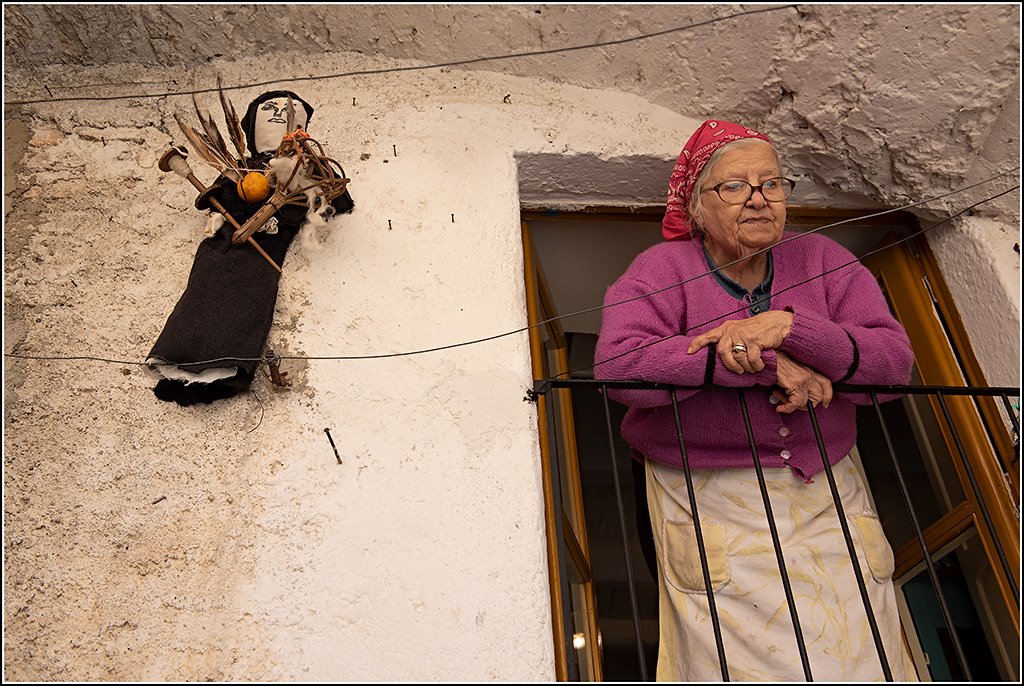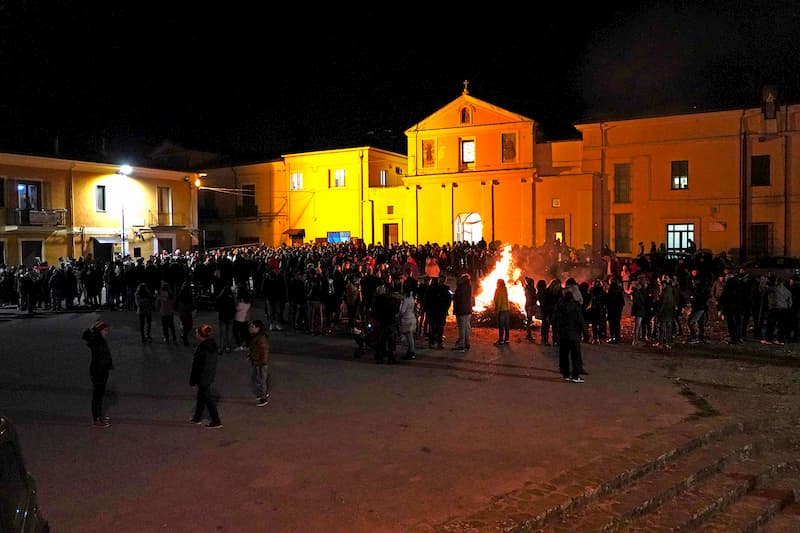

In local peasant communities, time was marked by an annual cycle of festivals and ceremonies. Today recognized as intangible heritage, they often came with costumes, musical instruments, or votive objects.The period of preparation for Easter according to an ancient Calabrian folk tradition was personified by a rag doll dressed in black, a unique way to count down the weeks of Lent.
Still today, in many towns in Calabria, from Ash Wednesday onwards, it is easy to come across the Corajisima, a rudimentary doll that designate the end of the excesses of Carnival celebrations and the beginning of a period of abstinence characteristic of Lent. That’s why the legend identifies the old woman with the wife of the “deceased” Carnival, suggested also by the symbology of the long black dress and the dark handkerchief on the head. She also carries a spindle and distaff filled with flax since, it is said, she spent whole days spinning in order not get sad at the thought of her dearly departed.
The ritual dolls, hanging from windows or suspended from a string stretched from one house to another, served as a calendar counting down the weeks of Lent with seven chicken feathers stuck in a radial pattern in an orange, lemon or potato, placed under the feet. They were joyously plucked one by one every Sunday until the last one, usually of a different color, that marked the end of the Lenten fasting period and was paraded on the evening of Holy Saturday, when the bells came back and rang out to announce the Resurrection of Christ.
This tradition, with little variations, was common all over the South of Italy, and is still alive here and there. As is the case with dialects, each town has its own peculiarities, personalisations and differences, even a few kilometers apart.
Photos courtesy of NeroFumo production
 Next article Calabrian bonfires on St 'Giuseppe's Day
Next article Calabrian bonfires on St 'Giuseppe's Day
